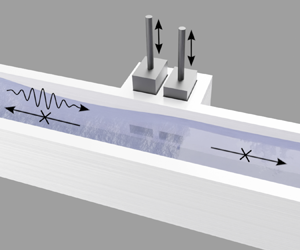No CrossRef data available.
Article contents
Perfect active absorption of water waves in a channel by a dipole source
Published online by Cambridge University Press: 12 August 2024
Abstract

This study investigates the potential use of an active device to efficiently absorb water waves propagating in a channel. The active device comprises a dipole source consisting of two sources in quasi-opposition of phase. We explore the feasibility of this approach to achieve perfect absorption of guided waves through interference phenomena. To accomplish this, we establish the law governing the waves emitted by the dipole source to optimize the absorption of specific incident waves. The validity of this law is demonstrated through numerical simulations and laboratory experiments, encompassing both the harmonic and transient regimes of the experimental set-up.
- Type
- JFM Papers
- Information
- Copyright
- © The Author(s), 2024. Published by Cambridge University Press





